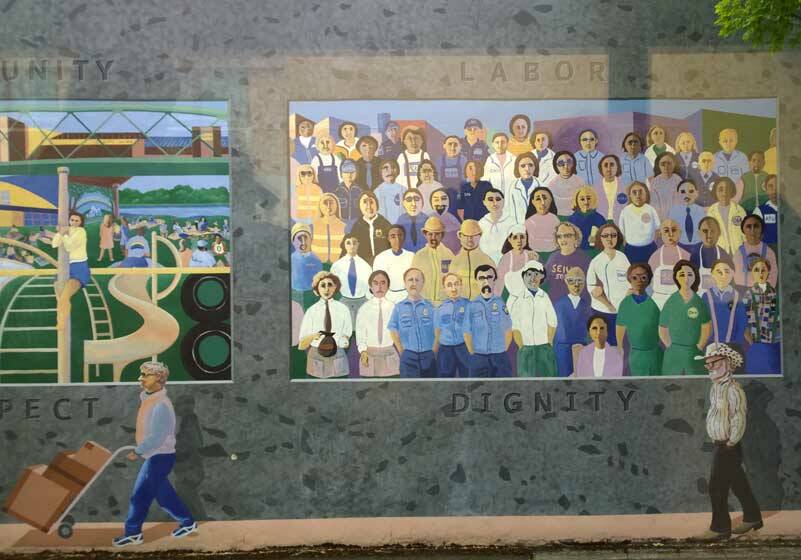By Morf Morford, Tacoma Daily Index
Work from the office?
The work from home movement, and whatever follows it, has thrown the real estate market – both residential and commercial into a crazy, unpredictable tailspin.
As always, benefits and challenges (and catastrophes) are not evenly distributed.
In the Denver metro area for example, which includes both the Boulder and Denver-Aurora-Lakewood markets, about 27.5% of workers work remotely, according to Census data from the American Community Survey. As a result, office vacancy rates have increased by 3% over the last 12 months.
Other areas have similar dynamics at work. Commercial and office vacancy rates in Austin have increased by 4.4%; 2.8% in San Francisco; and 2.3% in the outlying Bay Area.
In other markets, where a large share of remote workers is correlated with vacancy rate increases, consider Seattle (30.6% remote workers— 3.8% increase), Portland (27.5% — 3.7%) and the Twin Cities (26.0% — 4.5%).
In other words, there is far more economic distress (as in less demand) for office properties in markets with the highest concentration of remote workers.
Across the US, the national office vacancy rate in May was 17%, up 30 basis points over the previous month and 160 basis points over the prior year.
U.S. office vacancy rates have climbed more rapidly in tech markets, with some of the highest rates recorded in Austin (20.67%), Denver (20.24%), San Francisco (20.05%) and Seattle (19.53%).
This means (maybe) that this is a good time to buy or lease office space – the national average sale price of an office building has fallen from $250 per square foot in 2022 to $195 in 2023, a decrease of 22%.
This is a crazy market, with millions of dollars to lose. Or, for some, eventually, to gain.
It is a buyers market, but for how long?
Fire sales “R” us
As is often the case, one person’s or one company’s loss is someone else’s gain.
Hot markets just a few years ago are shrivelling.
The sale of Union Bank Plaza in Los Angeles highlights the dramatic, even chilling, drop in commercial real estate prices. Way back in 2010, KBS Realty Advisors bought the building for $208 million, but in 2023, they sold it to Westbridge Capital for only $104 million.
And if you think LA had it bad, a 13-story San Francisco office tower acquired by Wells Fargo for $108 million in 2005 is expected to trade for about $42.6 million- about a 60% drop in value over almost 20 years!
It’s a great time to buy. Unless, of course, prices drop even more.
Rental rates
In some areas, commercial rents are just as weak – Phoenix, Portland, and Denver had the lowest asking rents in the West, with rates of $27.53, $28.63, and $30.47/sq. ft. respectively.
Rental space is sort of the equivalent of temporary workers – a business might not have the resources for permanence – at the time, or maybe ever.
Being rooted, and making the commitment via permanent workers or site takes time.
Some industries (like agriculture) are essentially linked to temporary/seasonal workers. As are some regions. You can see a breakdown of the details of temporary workers by state here.
Los Angeles
Las Vegas might be called “Lost Wages” by some, but consider Los Angeles that has seen one of the steepest falls in average sale prices of office space across the nation, with the average sale price falling 43% to $237 per square foot from the $412 average price per square foot which was the standard price last year. But the market, for some, (as in those looking for a bargain) is still hot; the LA metro area recorded the largest sales volume in the West, with $1.01 billion in closed office deals year-to-date through the end of May.
If you want to see any bone-chilling details on the evolving commercial real estate market, take a look here.
Stay tuned
Of course, this is subject to change. In this convoluted economy, whether workers are hired or laid off by the thousands, city centers and massive office buildings are largely empty. The near frantic commercial construction boom of just a couple years ago has faltered, even stalled, in some areas.
Remotely working? Or working remotely?
Is working remotely a permanent feature? A bad dream? A sign of things to come? Or even the first of many changes in the working landscape for many of us – especially those entering the workplace?
Will working from the office seem like an archaic ritual of a barbaric past or as a fount of community and productivity? Or just another grim/funny setting for a sit-com?
Whatever becomes of the economy of 2023, we will look back on an economy and the working landscape like nothing we have seen before.





